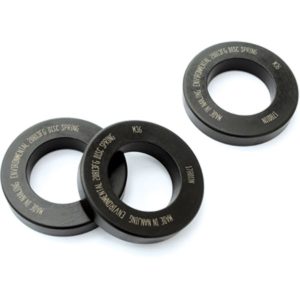Disc Spring benefits and disadvantages
The Ups and Downs of Disc Springs: What You Need to Know
When it comes to mechanical components, disc springs hold a special place. They’re used in many industries, from automotive to aerospace, because they pack a punch in a compact form. Let’s dive into the benefits and drawbacks of these interesting little springs.
What Are Disc Springs?
Disc springs, sometimes called washer springs, are flat and circular. They might look simple at first glance, but they have a unique design that allows them to store and release energy. Think of them as the unsung heroes in machines, as they can handle heavy loads while taking up minimal space.
The Benefits of Disc Springs
Space-Saving Design
One of the biggest perks of disc springs is their compact size. They can fit into tight spots where bigger springs just won’t work. This helps designers create more efficient machines without sacrificing strength. Think of it as packing a suitcase: you want to fit as much as possible into a small space.
High Load Capacity
Ever tried lifting something heavy? That’s what disc springs do without breaking a sweat. They can withstand high loads thanks to their sturdy construction. This quality makes them ideal for applications like load-bearing vehicles where strength is crucial.
Versatile Applications
Disc springs are like the jack-of-all-trades in the spring world. They can be used in various settings, from brake systems to clutch mechanisms. Their versatility makes them a top choice for engineers who need reliable components.
Easy to Install
Installing disc springs is generally straightforward. They can be stacked, and their simple structure means fewer complications during assembly. It’s like putting together building blocks—easy and quick!
The Disadvantages of Disc Springs
Limited Deflection
Despite their many positives, disc springs do have limitations. They have a relatively short deflection range. This means they can’t compress or expand a lot. If your project needs flexibility, disc springs might not be the best fit. It’s a bit like trying to stretch a rubber band that’s already at its limit—there’s only so much give.
Potential for Buckling
If not installed correctly, disc springs can buckle under pressure. This happens when too much force is applied at the wrong angle. Imagine trying to balance a stack of plates; one wrong move and you could end up with a mess. Proper alignment is key to avoiding this issue.
Cost Considerations
While disc springs are efficient, they can be pricier than other types of springs. This is especially true for high-quality materials. If you’re on a tight budget, this could be a significant drawback. Sometimes, paying a bit more can lead to better performance, but it’s essential to weigh the costs against the benefits.
Conclusion: Weighing Your Options
Disc springs are powerful little components that can greatly enhance your projects. They offer impressive space-saving capabilities, high load capacity, and versatility. However, potential challenges like limited deflection, buckling risks, and cost should be taken into consideration. Ultimately, understanding both the benefits and disadvantages of disc springs helps you make informed decisions for your specific needs. Whether you need them for heavy machinery or intricate devices, knowing the full picture ensures you choose wisely.

